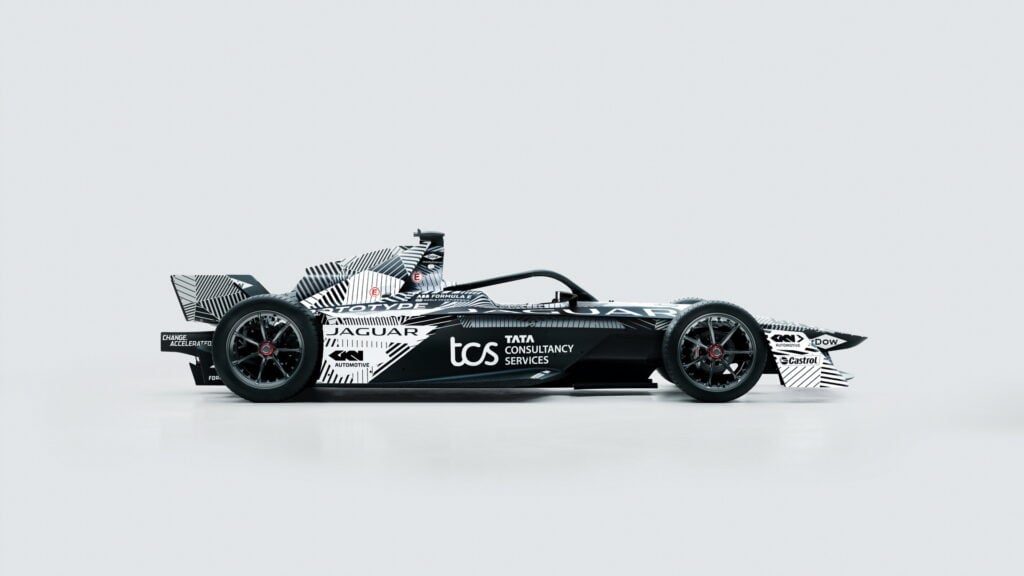This week in The Sustainable Motorsport Roundup, I bring you a deep dive into the new ERA Championship, look at how the Formula E Gen3 car evolved, discuss the issue of Formula 1 going all electric while bringing you some exciting sustainable motorsport technologies and more. I also look at Sebastian Vettel’s recent appearance on British TV and give my thoughts on why sustainable motorsport, despite being imperfect, is a reasonable and necessary evolution of the sport.
Series News
- Formula Scout has a comprehensive look at the new all-electric junior development series the ERA Championship in The first look at ERA: electric racing’s junior single-seater arrival. “The hardest part with electric vehicles and race cars is getting the balance correct with weight distribution, and the car is spot on to a normal combustion formula car. So having that as close as it is for being a first-generation of this car is really impressive and I think it’s why electric racing is the future because we’re already so close in such a new side of motorsport that given the same amount of time that we’d had with developing combustion cars, it’s going to be really interesting to see where it goes.” (ERA Championship Driver Ellis Spiezia)
- In Truly connected racing, ERA Championship title sponsor Software AG discusses the series, it’s goals and it’s future. “The Electric Racing Academy in Zolder is shaking things up in the motorsport scene with the world’s first all-electric junior race series. What’s more, truly IoT car connectivity will create a digital experience away from the track as well. See how Dieter Vanswijgenhoven, Technical & Business Director, and his Partner Beth Georgiou, Sporting Director, launch the series for better inclusivity, sustainability and digitalization than established combustion race series.“
- In How Formula E’s path to Gen3 and beyond reflects its ambition, Autosport looks at the evolution of Formula E cars from the Gen1 version to the Gen3 and the impressive progress they have achieved so far. “It feels deceptively long ago that the first generation of Formula E cars took to the grid around the Beijing Olympic stadium to kick off the championship’s first ever race in September 2014. Back then, everything was completely new; nobody in the paddock, or watching on TV, knew what was about to unfold. The teams couldn’t be sure if they would get to the end of the race, after testing at Donington Park ahead of the 2014-15 season opener had thrown up reliability concerns.”
- RaceFans also looks at the impact of the Gen3 car in How Formula E’s third generation car will keep it ahead of the ‘bandwagon-jumpers’. “Smaller and lighter is the opposite direction to the majority of race cars, especially as electric elements are being introduced to more series, and was a priority for Formula E in developing the Gen3. The savings are not inconsiderable. FE cars were already smaller than F1 but Gen3 cars measure nearly 90mm less front-to-rear, are 70mm narrower and 26.6mm shorter. The weight has come down by an impressive 60kg to drop to a combined weight of 840kg with the driver.”

- Jaguar Racing has unveiled details of their Gen3 Formula E era car. “With a monochromatic pattern based on abstract art, Jaguar Racing’s new I-Type reflects in its lines “the brand’s new global moment, reimagining the standards of modern luxury.” As part of this ambition, the company is also preparing for the expected adoption of clean fuel cell power in line with a maturation of its hydrogen economy. Development is already underway and prototypes will hit UK roads within the next 12 months.
- At the recent Green Racing Virtual Summit, Formula E Sustainability Director Julia Pallé made a simple but I believe logical and effective argument when it comes to motorsports and sustainability. Although she was talking about Formula E, I think it applies to all sustainability efforts in motorsport. “The driving force of Formula E is to show that racing and reason can coexist without compromising (the environment). So that’s what this (Gen3) vehicle is about.”
- Daily Sportscar has confirmed that the H24 Hydrogen Fuel Cell powered technology demonstrator race car will make its race debut this weekend at Imola in the Michelin Le Mans Cup. “The news this morning should also mean that confirmation will shortly come that the car will compete in the Road To Le Mans races supporting the 2022 Le Mans 24 Hours, a race start before Le Mans is understood to have been an essential stage in the ACO granting approval for the car to race at Le Mans.”
- Formula 1 has no other option than to go fully electric at some point, believes Formula E boss Alejandro Agag, and he wants it to develop in a “parallel” and “very coordinated way” with his Formula E series. “It is thought that eventually the ultimate performance of ‘active’ electric cars with full ‘bells and whistles’ like torque vectoring capabilities will far exceed ICE-propelled cars, meaning that the zenith of motorsport (F1) will have to quickly follow suit.” Of course by 2035, who knows what kind of technology might be out there?
- As part of the third edition of the Green Racing Virtual Summit #3 held on May 5, James Taylor, Chief Championship Officer of Extreme E, explained what the goals were behind the new Extreme H series. Extreme H will be a 100% electric off-road vehicle racing category, similar to Extreme E in nearly every physical and technical aspect except for the fuel to be used as propulsion: hydrogen. “In 2024 we will launch Extreme H, which we believe will be the first global racing championship to use hydrogen, where it will be raced over the same weekends as Extreme E at the same venues. We believe we have a fantastic product coupled with a deep platform in Extreme E, so now we want to move forward to the next stage in Extreme H.”

- Autosport looks at the recent edition of the Pau Motors Festival and how it is dedicated to introducing the idea to the public of alternative low carbon sustainable fuels. “The festival hosted a special one-day conference on 6 May. The subject of sustainability continued with an array of guest speakers from the European Commission, industry and development. There was also a mobile village set up for companies to present their products. As well as the renamed all-electric FIA ETCR series, 65% of the World Touring Car Cup field were powered by low-carbon hybrid fuel, while Adour-Ocean Cup competitors ran on biofuel.”
- For the 2022 Summit Racing Series, the NHRA has announced a new Street Legal EV class is being added to the largest motorsports program in the world with as many as 80,000 racers competing in Super Pro, Pro, Sportsman and Motorcycle categories across the vast number of NHRA’s North American member tracks. The EV class is being added to that compilation and will join other classes with their National Championship round, returning to The Strip at Las Vegas Motor Speedway the weekend of October 27-30, as part of NHRA’s penultimate Camping World Drag Racing Series race and the finale for FuelTech Pro Mod.

- Prodrive EcoPower is used in the Prodrive Hunter competing and winning stages at the Dakar rally. It produces 80% less CO2 emissions than using fossil fuels and can be used in almost any IC engine with no reduction in performance or range. Watch the video above for more details.
- Green Racing News has a look at the Bulgarian-based Kinetik E-Series in The New Karting Series that Reaches 130 km/h. “Our goal is to present the drivers, who are starting out with the means to develop their skills on the road to Formula E, the top level of electric motorsports. Currently, there are very few championships where the new generation of electric racers can gain experience on the track, so our goal is to close that gap,” said Teodosiy Teodosiev, CEO of Kinetik Karts.
Sustainable Motorsport Tech
- Prolific French race car manufacturer Oreca is to partner with global engineering company FEV to develop a hydrogen internal combustion engine for use in the Dakar Rally in 2024. “Oreca continues its exploration of alternative energies in the context of motorsports applications,” said Serge Meyer, director of Oreca’s Magny-Cours engine development facility. “It is with great conviction that we have chosen FEV as our partner to better understand the combustion of hydrogen and accelerate our development.”
- Stuttcars has published an informative article on the future of Porsche powertrains and how they will encompass hybrid, electric, and sustainable fuel. “This promise is to have all cars sold on the market by 2030 be either fully electric, use 100% sustainable fuel, or combine both technologies to reach a net-zero carbon target. This is where Porsche has doubled down on the future—and as you will see, there are some exciting (and very possibly revolutionary) engines and cars coming down the pipeline.”
- Porsche has also acquired a stake in innovative producer of battery materials Group14 Technologies. “Group14 Technologies, which is based in Woodinville in Washington state, intends to use the increase in capital to accelerate its worldwide production of anode material for lithium-ion batteries. Before the end of the year, Group14 will be laying the foundations of another factory for the production of battery active materials (BAM) in the US. In future, Group14 will also supply the Cellforce Group from Tübingen, in which Porsche holds a majority stake. Cellforce was founded in 2021 by Porsche and Customcells Holding. From 2024, in Germany, the joint venture intends to produce self-developed high-performance battery cells with silicon anodes for small series production, motorsport and high-performance vehicles. The Cellforce battery cells are expected to be used in electrically powered Porsche vehicles with high-performance powertrains.”
- In How Solid-State EV Batteries May Lick the Fast-Charging Degradation Problem, Autoweek looks at the issue of fast charging EV batteries. “Solid-state batteries, with no liquid electrolyte, have been (like fleets of hydrogen cars) just around the corner for a long time. But commercialization is finally approaching, the companies say, and along with advantages over traditional lithium-ion in safety, weight and energy density, add a potential ability to fast-charge regularly with reduced battery damage.”
And Now For Something Completely Different

- The Apex H2 is the follow up to the Segway’s 2019 electric super motorcycle concept, the Apex. “Like that prototype, it sports a head-turning cyberpunk-inspired design that wouldn’t be out of place in a Tron sequel. The glossy black and white bike is all bold shapes, sharp angles and an outlandish one-sided front fork. The most striking aspect of the design, though, are the neon-lit accents that draw your attention to its wheels and sleek motor bay. “The engine setup holds its own, too. The Apex H2 will feature a hybrid powertrain that will convert gaseous hydrogen into electrical energy via a special fuel cell, reports New Atlas. Ninebot says the hydrogen-electric setup will be able to generate over 80 horsepower and rocket the bike from zero to 60 mph in less than four seconds. Considering that the original Segway—yes, the infamous two-wheel personal transporter favored by mall cops—topped out at 10 mph, that’s pretty impressive, even if it is slower than the Apex concept’s quoted top speed of 124 mph. Of course, there’s one key difference between the two bikes: The Apex H2 will be one of the rare concept vehicles you’ll be able to buy.”
The Big Picture
F1 driver Sebastian Vettel recently appeared on British TV talk show Question Time and admitted that the climate crisis makes me question racing in F1. “Asked if racing in F1 made him a hypocrite when it came to highlighting the need to save energy, Vettel replied: “It does, and you’re right when you laugh, because there are questions that I ask myself every day.” Anybody involved in motorsport and confronting the current landscape where every sport needs to essentially justify their use of scant resources would understand where Vettel is coming from. At the end of the day, motorsport is entertainment and is not absolutely necessary for humans to exist.
But he also points out another factor: “Vettel also highlighted the importance of F1 as a source of entertainment, believing that people “would probably go mad” without things to enjoy.” This to me is key. Society needs entertainment, if to act as anything but a buffer between the trials and tribulation of life in 2022 and because it is such a popular form of entertainment, it can act as a proving ground for technologies that can make a difference to society as a whole while educating its fans on the problems and solutions available. Will motorsport ever be 100% sustainable? Of course not, no human activity will, but that does not mean that while enjoying the sport we love we do not continue to try and reduce its impact on resources as a whole. It is an imperfect, sometimes messy but always exhilarating journey and as Formula E Sustainability Director Julia Pallé mentioned above, racing and reason can in fact coexist. The future of the sport depends on it.





